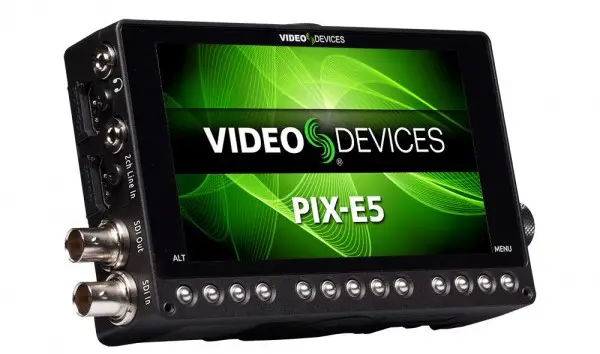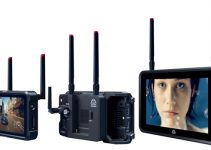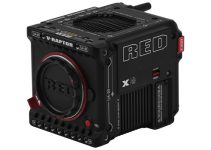The Sony A7S II came out only about a month ago and already took the world of independent filmmakers and enthusiasts alike by storm. Naturally, many filmmakers who still don’t own the camera are interested in its overall performance mainly in comparison to the previous model – the Sony A7s and the other main competitors in the segment that are also capable of recording 4K internally – the Panasonic GH4 and the Samsung NX1.
There are so many aspects and questions regarding the camera and the workflow it provides that deserve to be discussed, however, it’s really hard to summarize all of these topics just in a few sentences. Yet, Max Yuryev tries to put things into perspective and help out filmmakers make an easier buying decision by putting together two informative videos where he highlights all the positives and negatives the camera provides. First, here are the features Max likes the most.
Unsurprisingly, internal 4K recording is on the top of the list. Indeed, this was the main reason for so many people who preferred to get the Panasonic’s GH4 in the first place instead of buying the original Sony A7s which isn’t able to record any form of 4K internally, but has to do so via the HDMI port out to an external recorder like the Atomos Ninja Assassin or the Odyssey7Q+ and the newer Video Devices PIX-E5.

Considering the fact that 4K internal recording has already been accepted as an industry standard, the camera manufacturers really don’t have an excuse not to implement this feature even in their entry-level models if they want to stay ahead of the pack.
Second, Max puts the ability of the A7S II to record 120fps slow-motion at 1080p. Although being a great feature to have, you should be aware that when the A7S II records in this mode it utilizes a crop mode of the sensor( 2.2x crop factor) that results in a field of view similar to the one the GH4 Micro 4/3 sensor provides natively.
Yet, the camera still uses the full pixel readout and digital low pass filter in this mode that greatly reduces moire and aliasing, so it’s unlike to see any of those even in the most challenging situations like the one below.
Another positive feature worth noting is the built-in 5 axis image stabilization. Finally, the A7S II shooters had the ability to get usable hand-held results without using any addition support systems or gimbals. In combination with the optical stabilization that many lenses provide the SonyA7S II definitely seems to be extremely powerful and efficient solution, especially for run and gun situations.
On top of that when you add the astounding low light performance and the excellent dynamic range, the camera quickly becomes a clear winner not only in its market segment, but it can also be a serious competitor of multiple times more expensive high-end devices. Unfortunately, the A7S II also comes with its flaws and imperfections just as any other camera system available out there.
Without any surprise, the main downside for Max is the overheating issues that occur when using the camera under certain conditions while shooting 4K internally for an extensive period of time. This issue still creates some pretty heated debates among 4K shooters and it’s something you should definitely keep in mind.
The second drawback that Max points out is the poor build quality and mediocre performance of the rear LCD screen. All in all, his major complaint is that it’s not bright enough and there’s certainly not enough resolution for more precise and accurate focus pulling.
According to Max, another issue that you might find frustrating is the bitrate when you are shooting in 4K internally. The video is recorded as XAVC-S 8-bit 4:2:0 at 100Mbps that on certain occasions like the one below just isn’t enough, especially when you are shooting in S-Log3 mode as you can easily stumble upon bаnding issues due to the lack of more bit depth and higher recording bitrate.
Although Max puts the 120fps recording in the list of positive features, he also includes it here, mainly due to the crop factor that in reality simply limits users to capture wider shots.
At last but no least, comes the native Sony lens options. As a Sony A7S II user, you are quite limited in terms of getting native lenses for your camera. Even though Sony plans to release eight new lenses in the upcoming months the choices for the moment are still limited and it’s something definitely that needs to be considered before making the switch to Sony’s ecosystem.
Surely, there are many other pros and cons that we can point out, so feel free to share your opinion on the topic in the comment section below.
[source: Max Yuryev]
Disclaimer: As an Amazon Associate partner and participant in B&H and Adorama Affiliate programmes, we earn a small comission from each purchase made through the affiliate links listed above at no additional cost to you.
Claim your copy of DAVINCI RESOLVE - SIMPLIFIED COURSE with 50% off! Get Instant Access!






It’s not low bitrate (100mbps it’s not low..) causes BANDING (not bending..) it’s lack of a 10-bit codec (also on hdmi output :/ ). And THIS is biggest downside of a7s II.
“…you can easily stumble upon banding issues due to the lack of more bit depth”, that’s what I wrote. As for the “banding”, a typo, I’ve missed that, thanks!:)
First of all, I have to add something to the crop issue – you also cannot record 4k at aps-c, nor 1080p ( which can turn out very helpful at 50p) at full frame.
4k is full frame.
HD is aps-c crop.
Hfr is 2.2 crop.
As an a7s user, I am used to shooting 1080 50p at full frame and the fact that I have to pay 3000$ to upgrade my camera and lose the ability to shoot as I am used to, is not appealing, to say the least. This isn’t a small issue, besides having lenses that are designated for full frame, crop mode isn’t as clean at high iso like full frame.
Battery life is somewhat still an unsolved issue, which can be sometimes frustrating. I own the camera for over a year and already lost 2 original batteries that stoped working. Sony should really address this problem and find a better solution.
Sony native lens line isn’t just missing, it is also problematic. FE lenses use focus by wire mechanism which is horrible for videography. The only lenses that doesn’t have focus by wire besides the 28-135 and the 90 are manual lenses and anyone thinking of replacing lenses to native has to choose between auto focus lenses that are terrible for manual focus, or giving up the ability to focus automatically. This is very frustrating.
Having said that, buying an a7s in 2014 was one of the best professional decisions I made, as it is a great cinematic tool.
Good to know, MaorK! Thanks for sharing your experience with the community!
that is not actually true. both 4k and hd can be shot at full frame. only 120fps cannot.
This is what I got from someone else who used the camera, so I guess you’re right and just did not find the proper settings. I stand corrected about the first issue I wrote
My head is swimming right now. What I want is to find the kind of camera system in which I can run/gun with multimedia capture/transmission, without having to carry two systems. For my needs of photojournalism/immediate posting, the system has to be EVF-based, so Canon and Nikon (what I’ve worked with for 32 years) is not an option. I need a small footprint to be as unobtrusive with transporting gear and regarding subject awareness as possible. Sony can’t be the choice because of the size of sensor and lack of lens options. The one system that I’ve grown very excited about is the Panasonic Lumix. Just last year we received Nikon D4S bodies, but tday I’m willing to drop them for the Lumix GH5 system. Reading what it has to offer? This is what I’ve been wanting for 9 years. I had been digging about to see what Sony has to offer today but it pales in comparison.
Is it possible to use an adapter for ef mount if yes then Which adapter is compatible to use for ef mount lenses,and will it possible to shoot 4k or 4k Raw using an adapter